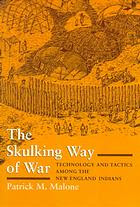A few of us from the Ambush Alley/Force on Force forum have started a new WDC area group for gaming AA/FoF and a variety of other rules. It looks like we'll be meeting in the Palisades area of Northwest D.C., which is convenient to close-in Northern Virginia.
Join us if this interests you.
Google Group here: http://groups.google.com/group/dc-gaming-group
Sunday, February 14, 2010
Friday, February 12, 2010
The Skulking Way of War
Malone, Patrick M. The Skulking Way of War: Technology and Tactics among the New England Indians. Lanham, Md.: Madison Books, 1991.
At just 132 pages, of which about 100 are text and the rest notes and related back matter, this is not a thick tome. But, its length belies its erudition and usefulness. In a nutshell, it examines the cultural-military encounter of Indians and whites in colonial New England in the period between the Pequot War (1636-1637) and King Philip’s War (1675-1676). At the beginning of this period, the Indians had few, if any firearms; by the end, most had flintlock muskets and carbines, like the whites. Moreover, they had effectively integrated firearms into their aboriginal, “skulking way of war” and forced the whites in response to adopt the irregular tactics they had scorned in their earlier encounters with the natives.
The author tellingly quotes the observation of one of the white leaders, made after King Philip’s War: “In our first war with the Indians [the Pequot War], God pleased to show us the vanity of our military skill, in managing our arms, after the European mode. Now we are glad to learn the skulking way of war.”
I originally wanted to read this book for insights into native weapons, organization and tactical doctrine, which it provides aplenty. In addition, I found much that was new to me on how the Indians acquired firearms, despite the most stringent prohibitions, and how the whites used native auxiliaries in their military encounters with Indian adversaries.
The book is also copiously illustrated, and the annotated footnotes are most useful, particularly if one wanted to investigate specific subjects in depth.
Subscribe to:
Comments (Atom)
